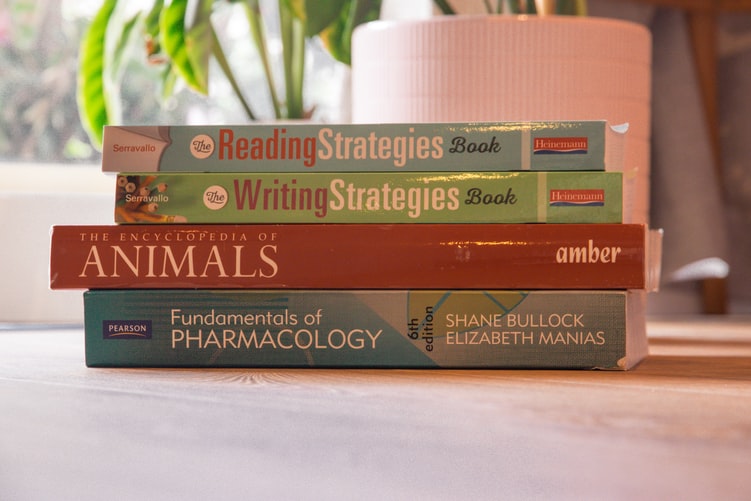How To Teach Reading—Best Methods To Teach Reading Skills
Reading and writing skills are important for so many reasons. Improving your students’ reading skills and teaching them how to read critically enables them to be more successful in college and gives them better employment prospects. This also means that developing different types of reading skills will make it possible for your students to thrive in any career they choose easily.
Before you teach them the skills in question, you need to make your students realize how much reading comprehension matters. Making reading an obligatory part of a lesson or assigning reading material only for homework isn’t going to help your students much in the long run.
You need to encourage your students to take up reading in their spare time and make them see how they are going to benefit from sharpening their reading comprehension skills. It will boost their motivation to do any critical reading exercises you give them and improve their skills effectively.
The key to this is finding fun ways to teach reading, encouraging the love for the written word in your students, and employing smart and innovative strategies to help the students struggling with reading break free of their limitations.
Teaching Reading—Think Before You Act


Credit: Kelly Sikkema
The key to any effective school lesson is thorough planning. Veteran teachers might be more comfortable with impromptu classes, but they will always have a lesson plan before they enter the classroom too.
When teaching reading, which is such a broad language macro skill, you need to give yourself extra time to organize your lessons. Come up with your teaching strategy ahead of the lesson and think through all the unplanned ways in which the lesson may unfold.
You can’t give your students a reading assignment and expect them to sharpen their critical reading skills on their own.
A poorly planned and executed reading activity can result in your students growing into passive readers. Conversely, when you set a clear objective for your lesson and have a well-thought-out teaching strategy, you make sure your students are motivated to take up active reading.
Here’s how active and passive—may also be referred to as critical and uncritical—reading plays out:
| Active Reading | Passive Reading |
|
|
To encourage your students to think critically and employ different reading strategies, you should:
- Choose the material you assign carefully
- Make use of technology for reading assignments
- Get to know your students
- Assign a purpose to each reading activity
Indulge Your Students With the Material They’ll Love
When coming up with ways to make your students love their school activities, the best strategy to employ is to make them work on something they are familiar with. Although you want to follow the curriculum closely, you should also find ways to incorporate the type of reading material your students will be happy to analyze.
This can include various forms of text, like:
- Blog entries
- Contemporary fiction
- Social media posts
- Newspaper or magazine articles
While choosing the reading material for the activities you’ll assign in your lesson, you should also pay attention to the level of language your students possess. To improve grammar, vocabulary, and comprehension, your students need to be challenged by the text that is slightly above their level. You should also make sure they are familiar enough with the topic the text is covering.
Embrace State-Of-The-Art Technology in the Classroom
In this day and age, students grow up with smartphones in their hands. While the negative effects of that are constantly being debated, you should not neglect the fact that technology can be useful for teaching reading.
As soon as your students hear they are going to have to take out their phones in class, they will be more willing to participate in the activity. Luckily, there are many apps to teach reading that you can use to your advantage.
Whichever part of reading skills you want your students to work on, you can teach them using their favorite device. For example, they can practice reading fluency through audiobooks. They can join book discussions and exchange opinions on what they’ve read. They can also enrich their vocabulary with in-app exercises.
Get Close to the People You’re Teaching
The role of a teacher as a figure of absolute authority is an old concept that doesn’t benefit your students’ learning anymore. When you see that something isn’t working in the classroom, it’s time to reevaluate the activities you assigned or the strategies you employed in your teaching.
Instead of making your students do a task that they’re struggling with, ask them to explain what it is about it that they can’t comprehend.
Giving your students control by making them participate in lesson planning will do wonders for motivating them to practice reading skills. Allow them to use their student voice and the authority to choose their material or the activities they want to do. Not only will they be more stimulated to learn, but they will also get used to autonomous learning and having control of their own progress.
Give Your Students an Objective
You might know why you assigned a particular reading task to your students, but they also need to be made aware of the goal you’ve set. Having a clear objective is essential for achieving any goal, and that is especially true in the classroom.
Perhaps you want your students to acquire new vocabulary from the text they’re studying, or you want them to develop their critical thinking skills by questioning the material. Whatever it is, tell them loud and clear why they’re doing what they’re doing. This will influence the way they read the text and give them a sense of accomplishment when they complete the task.
Teaching Students To Read Critically—Practical Steps


Credit: Yoab Anderson
You’ve seen that a great deal of thinking and planning goes into teaching students reading skills. They not only need to work on honing their skills from a practical point of view but also to learn to take up reading on their own. Knowing this helps you determine what reading activities you will assign in the classroom.
Your students should also know the difference between two broad types of reading:
| Intensive Reading | Extensive Reading |
|
|
You should incorporate both intensive and extensive reading into classroom activities. Both yield the results you want your students to accomplish—from studying grammar to improving comprehension. However you design the activities to achieve certain goals, tell your students the way they’re going to read a certain text, i.e., whether they’ll employ the intensive or extensive approach.
Reading is such an integral part of life and education, and there are many ways to teach it.
Here are some ideas for the activities you can assign to get you started:
- Predicting what the text will be about
- Studying new vocabulary before reading
- Answering the five Ws
- Doing comprehension exercises
- Reviewing the material
- Summarizing the story
- Writing an essay
Teamwork and Brainstorm
Background knowledge matters more than anything for your students’ ability to comprehend the texts they’re reading. You can activate your student’s prior understanding of the world by discussing the topic of the material together as a class. They can chat about the topic in teams and see if their predictions about the text were right. Giving them a keyword is enough to get them started.
Here are some more ideas for predicting activities before reading:
- Skimming through the text before reading deeply
- Brainstorming the ideas based on the title of the text
- Predicting the main points of the text
Locate the Vocabulary
If you want to focus on vocabulary practice during a reading assignment, there are many ways you can design your lesson. For example, you could present the vocabulary that’s new to your students before they get to the reading of the material.
Write down some phrases on the board or distribute flashcards to your students. They can craft their own sentences using those phrases and compare them with the sentences from the assigned text.
You can also give them synonyms to the new words in the reading material. After studying them, have your students locate the new vocabulary items in the text based on the synonyms.
Answer the Five Ws
Reading is an interactive process, and your students should learn to engage with the text in front of them actively. This means that, after your students have finished reading the material you assigned, they need to discuss it. Before going into the complex and thought-provoking debates, you want to make sure that your students have understood the basic meaning of the text.
This can be accomplished by asking your students to answer the five Ws first:
- What the text is about
- Who the text is about, or who the author is
- Where the action is located
- When the action has occurred
- Why the topic is important
If your students are reading non-fiction material, they can still answer the basic five Ws. For example, even if there isn’t any answer to when the action has occurred, maybe they can answer when the book or article was published.
Did You Pick Up On That?
You can test your student’s understanding of the text further by giving them comprehension questions exercises, such as:
- Multiple-choice questions—give your students a clear aim when reading. They need to go through the questions and the given answers before they start looking for the correct information in the text
- Yes/No questions—make sure your students have understood the basic information in the text. These questions can test the understanding of simple facts in the text, as well as deeper meanings
- Sentence completion—helps your students practice grammar and vocabulary as they need to write specific information from the text in their own words. This exercise also tests your students’ comprehension because their answers need to align with the original text
- True/False questions—test whether your students have interpreted the text in the right way. These questions can be about specific information or the deeper meaning
To make the exercise more fun, why not employ peer assessment? Giving students control to check each other’s answers will not only encourage their competitive spirit but also relax them as they don’t have to worry about disappointing their teacher with incorrect answers.
What Did the Author Want To Say?


Credit: Lewis Keegan
When you have made sure your students understand the basic information of the text, you can go into stimulating questions to spark longer debates. This is where true interaction with the reading material comes into play.
Classroom debates are incredibly fruitful because they allow students to practice reading, listening, and speaking skills simultaneously. Make sure to prepare stimulating question starters beforehand to spark the conversation more easily. You should also make an effort to create a safe atmosphere in which your students know there aren’t any wrong answers or invalid opinions.
Another idea is to have your students research the material studied at home. They should find new ideas related to the topic and use them to prepare their questions for further discussion in the next class.
Summarize the Text
Having your students summarize what they read is another activity that helps them understand the material. The activity also helps your students sharpen their memory, attention, and speaking skills, and it can be done orally or in writing.
Your Student’s Turn
You can combine the reading and writing skills practice and have your students create their versions of the text they’ve read. If you believe that retelling the whole story in their own words will be dull for your students, you can give them only parts of the text to rewrite. Tell them to identify any paragraphs they believe could have been written better and then make them demonstrate it by writing their versions.
Another way you can have students sharpen both their reading and writing skills is by giving them an essay topic related to the material they read in class. Have them write a review or a commentary on it. This will help them:
- Interact with the text actively
- Hone their writing skills
- Pay attention to the writing strategies used in the text
- Enhance research skills
- Form original opinions
How Do You Teach Someone To Love Reading?


Credit: Sincerely Media
Getting your students to develop their reading comprehension skills to pass the school year or get into college is important, but nothing is as crucial as encouraging the love for reading in young adults.
When your students can read for pleasure and enjoy a book that is not obligatory for the school assignment, they will be more willing to work on their comprehension skills actively.
Here are some ideas you can check out to inspire your students to enjoy reading:
- Think about what the best books to teach reading are. Do some research and find the books your students will be interested in. Think about how you can make them read these books on their own and promote the love for reading by showing them that research articles and classic literature aren’t everything that’s out there
- Show them how much you love to read. When your students see how much you love reading for pleasure, they might change their attitude to reading. See also if you can have teachers of various subjects covertly promote their love for reading as well. If you want your students to buy into the habit of reading, show them that the activity isn’t only related to language study
- Accentuate that reading can be an escape. While you’re demonstrating to your students how much you love reading, tell them that you find it can provide a healthy form of escapism from your daily obligations. When they see it as such, your students will likely buy into reading for leisure too
What Do You Think Are the Best Ways To Teach Reading?
Do you think that we pretty much covered the best methods to teach students reading comprehension skills, or do you feel there are important points we have neglected to mention?
What extra ideas do you have to encourage students to take up reading in their spare time? We would love to hear them. Write about the best approach to teaching reading in high school, and we’ll publish your words on our blog!
We believe it’s high time we brought innovations in schools and transformed our school culture so that students are equipped with the tools they need to succeed in the 21-century world.

